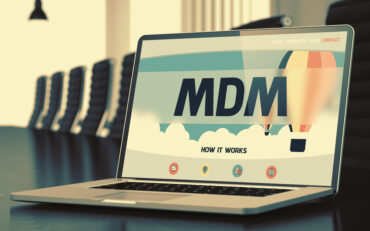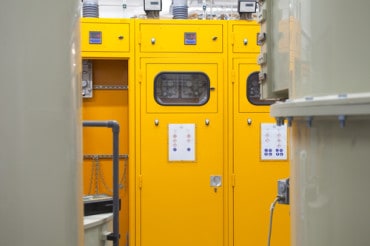
As automation increases in manufacturing, metrology will be a vital part of future industrial practices, ensuring quality control and more.
Since the early days of inventions, humans have used metrology to advance society. Metrology is the scientific study of measurement. This may seem like a simple concept since it’s so ingrained into our society, but if you stop and think about it in the sense of quality control, you realize just how necessary it is to keep us safe.
Everything we interact with is composed of parts that have been measured to make the product look and work according to certain specifications. Without metrology, there would be off-balanced tables, uncomfortable-fitting medical implants, broken cars, unsafe buildings, and many other issues.
Metrology is the backbone of quality control in manufacturing—it controls how we create a part, whether it’s long or short, thick or thin, and ensures that the parts are manufactured according to their specifications. To put it simply—without metrology, there would be no consistency in the world.
Measuring was historically conducted with manual tools like micrometers, calipers, gauges, and indicators. But what went wrong with metrology in 2020? And how did we move from manual metrology to advanced 3D systems, laser scanning, and sensors? Even more, where are we going from here?
Let’s look at some recent metrology trends and how they will continue to shape future industrial practices.
The pandemic metrology wake-up call
When the 2020 COVID-19 pandemic hit, businesses were forced to close, people were forced into their homes, and, as a result, metrologists noticed a glaring issue in manufacturing. The measuring tools were all manual, and with technicians unable to go to shop floors, the measurements couldn’t be taken, and manufacturing slowed down significantly.
Automated processing machines could keep up with the demand, but without metrology, there was no way to put out products with quality control. Because of this, supply chains slowed with bottlenecks and difficulty balancing the continued demand.
Now, in 2023, when businesses are opened back up, there is a detrimental after-effect. The loss of 1.4 million jobs meant the loss of hours of training. With high-stakes metrology needing precision while also keeping up with demand, companies need solutions to tackle these problems. Companies are asking, how do we hold metrology to a high standard when applicants are missing skills?
The answer? Make technology smarter, faster, and easier to use. Let’s explore a few trends that are helping to make that happen.
See also: Using Fuzzy Logic and AI to Improve Supply Chain Efficiency
Current trends in modern metrology
With the pandemic highlighting the consequence of losing metrology skills, companies are now leaning towards “lights out” (remote) measurement with technology that holds the capabilities of an experienced metrologist. This technology is changing from requiring years of experience into visuals, instructions, and methods that any laborer can quickly pick up. Let’s dive into the trends manufacturers are following to achieve this.
No humans needed
Modern metrology evolved from a tedious process requiring manual labor to an expedited hands-off approach known as “lights out” measuring. Sensors, blue light scanners, and laser beams were added to the production line, calculated measurements automatically, and self-corrected without a technician.
These systems are integrated into an IoT with processing machinery. With automated measurements, the metrology equipment works hand in hand with the processing machine, so the measuring and processing are in one step instead of two.
Not only is this a lifeline for the possibility of another issue preventing technicians from going to the shop floor, but it also saves money with how many technicians need to work there and even opens up more time for training.
Fewer machines needed
Over the last couple of years, demand has fluctuated, and the supply chain hasn’t always been able to keep up. Businesses scramble to move products down the line but suffer when they can’t move fast enough, and demand decreases once again. It’s a game of cat and mouse between supply and demand, and companies are losing money because they physically can’t get their machines to measure or inspect parts faster.
To end this cycle, companies are using metrology tools that measure and inspect hundreds of parts simultaneously instead of one per machine. Companies are moving towards machines like automated optical comparators that measure up to 100 parts in three seconds.
These tools save companies’ budgets and allow them to beat the demand before it changes and leaves excess supply. Additionally, they’re saving money on energy by powering fewer machines for the same production value and spending less on extra shop floor locations.
User-friendly interface
The manufacturing industry is facing a skilled-labor dilemma – an influx of entry-level unskilled laborers and a deficiency of skilled mid-level workers. Because of this, companies are now using modern metrology systems with an optimal user experience that doesn’t require formal training.
These tools include handheld coordinate measuring machines controlled by the touch of a probe with tutorials and an app-like interface and optical comparators that adjust, measure, and record data by pressing a single button. Instead of a technician being the brain behind the movements and measurements of the machine, the software takes on this burden. With this new technology, the industry can welcome entry-level workers as the new technicians for these user-friendly tools.
Faster than ever
In addition to adding automated measurement tools that measure hundreds of parts in seconds, companies are making the process even faster by adding extra features to the measuring machines that combat typical measuring problems.
These tools are phasing out of manual lighting or positioning readjustments and into auto-focusing lenses and lights that combat ambient vibration and temperature changes. Also, with the integration of IoT, these measuring systems are collecting, storing, and reporting data – speeding up a lengthy data organization and analysis time.
3D metrology
Adding lasers, blue light, coordinate measuring machines (CMMs), and other scanning methods to measure a 3D object’s features is a modern metrology technique with a market expected to reach $14.8 billion by 2027. These systems use light forms to analyze a part from a 3D perspective, which measures faster and more precisely.
This 3D metrology system is beneficial for measuring existing parts and comparing parts to prototypes. These 3D scanning systems can overlay data points onto a part for more straightforward and more exact processing, which is a monumental change from basing parts off of 2D drawings. Instead of 2D drawings, these 2D figures can now be 3D images and videos. With these 3D models, verifying form, fit, and function is more precise without any interpretation errors from a 2D image.
Utilizing metrology to elevate data quality
Traceability data is essential to every industry—it’s a way to track the life cycle of a product for the consumer or manufacturer. Metrology is included as part of this necessary traceability data, and modern automated systems are elevating how traceability data is collected.
Measuring systems with feedback loops connected to a processing machine’s IoT are storing and organizing this data. This process means collecting patterns about defects for preventive maintenance and calibration, creating remotely accessible data sheets, and adjusting machines based on measurement data. This data can then be submitted for national and international regulatory compliance and down the supply chain so manufacturers can adequately track the product’s history.
The future of metrology industrial manufacturing practices
Modern metrology trends inspire manufacturers and metrology organizations to innovate even more efficient and advanced metrology solutions for accelerating prototyping and collecting accurate data. The future of metrology is starting now, but these new innovations are expected to grow more in the coming years.
Digital twins
Deloitte reported that digital twins are one of the driving forces entering the industrial manufacturing world. A digital twin is like 3D modeling but at an even more innovative height. Digital twins are more than just models; these are simulations of real products and machinery that help manufacturers invent new components, manufacturing machines, and tools.
Digital twins can be used to prototype a part to see how it could fit as a component of a whole product. Or, as a manufacturing tool, digital twins can be made to see how a machine could fit onto a shop floor or as an addition to another machine. This technology is revolutionary for accelerating the prototype iteration process, giving opportunities for more significant ideas, and spending less money on raw materials. Manufacturers can be even more creative with innovation because no supplies are lost.
Sensor networks
Data is already being stored faster and more organized than ever, but metrologists hope for something even better. An organization named Metrology for the Factory of the Future (Met4FoF), made up of metrologists from world-renowned US and European institutes, is looking to build sensor networks that produce reliable data while tackling challenges like noise, vibration, redundancy, and machine decision-making.
Met4FoF uses the Bayesian framework to combat the effects of noise and vibration and is practicing on testbeds to create algorithms that teach machines preprocessing steps. Its end goal is to combine information from all sensors at one location to make one network that can be analyzed for machine health, process, and control.
What improved metrology means for the world
Modern metrology is moving quickly, and metrologists are continuing to find new ways to make these innovations even more advanced. Instead of looking to a future of constant catch-up, businesses and manufacturers are seeing solutions now. Need more employees? Add automation. Too many unskilled employees? Make the technology smarter and easier to use.
The value of metrology will always be maintained, and companies are determined to hold their quality and precision to the same (or better) standard than in pre-pandemic times. The metrology boom foreshadows a future of longer-lasting products, improved quality control, and striking innovations ahead. When it comes to manufacturing and supply chain, without metrology, it will halt, so it’s worthwhile to consider metrology technology as a vital part of future industrial practices.






























